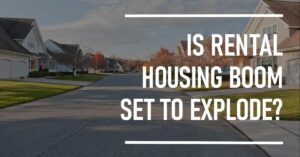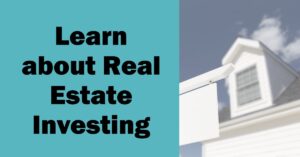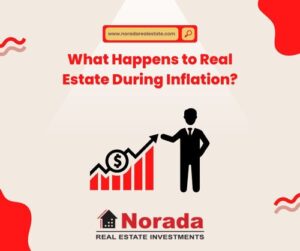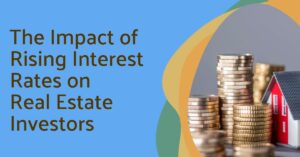Don't get me wrong. Cash flow is good (assuming it's positive), but absolutely NO one has ever become rich from cash flow alone. Think about that for a minute.
Let’s look at a quick example. Let’s say you have a $100,000 property that generates $200 per month in positive cash flow. That’s $200 per month after all your expenses and debt service. That would give you $2,400 per year or $12,000 over five years in cash flow.
Assuming you follow our advice of maintaining a reserve account for each of your properties to cover future maintenance and repairs, you will have made $12,000 in net profit over those five years. This assumes that nothing unforeseen happens along the way such as a hot water tank or leaky roof requiring replacement, or a long-term vacancy.
If you’re going to put your investment capital, credit, and possibly your income at “risk” for $12,000, then you’ll need more than just cash flow to make it worthwhile. You need to be investing in markets that offer good appreciation potential. That is how you become rich!
Live where you want and invest only where the numbers make sense! This stresses the importance of investing in good markets and good neighborhoods.
Going back to our example above, what would happen if we averaged only 5% appreciation per year in addition to the $2,400 in cash flow? (Remember that the national average has been 6.2% going as far back as the 1940s.)
With only 5% appreciation per year you’d make over two (2) times more money in equity than cash flow alone. And with a 10% average rate of appreciation over five years you’d make over five (5) times more money in equity than cash flow alone.
Did you forget that appreciation in many markets used to be over 10% as recently as four years ago? Markets move in cycles and appreciation always happens as markets cycle off their bottoms. We are seeing it today in markets all around the country.
Of course, in addition to the positive cash flow and money made through appreciation, you also benefit from the amortization of the mortgage and the tax benefits through depreciation, tax deferred exchanges and lower capital gains when holding your property for more than a year and a day.
Now is the time to be investing with so many markets near their cyclical bottom or turning back up. Cash flow is great, and it’s the “glue” that keeps your investment together, but it’s the equity growth that will make you rich.
Why Cash Flow Alone Isn't Enough to Get Rich
- Limited Growth Potential: Cash flow provides a steady income stream, but the amount typically increases slowly over time due to rent control or gradual market adjustments. This can make it difficult to achieve financial independence or aggressive wealth building goals solely through cash flow.
- Inflation Risk: Inflation erodes the buying power of your cash flow over time. A $200 monthly profit today won't hold the same value in ten years. This means your cash flow won't provide the same level of financial security in the future.
Appreciation: The Engine of Wealth
- Exponential Growth: Property value appreciation can snowball over time. Even a modest 5% annual increase can significantly boost your equity and overall wealth. Imagine a $100,000 property appreciating by 5% every year for a decade. That translates to a $50,000 increase in equity, outpacing any cash flow generated during that period.
- Leveraging Debt: Real estate allows you to leverage debt (mortgage) to acquire assets. As property value rises, the loan amount stays fixed, increasing your return on investment (ROI). This magnifies the gains from appreciation compared to a straight cash purchase.
Beyond Cash Flow and Appreciation
- Tax Advantages: Real estate offers various tax benefits, including depreciation deductions, which lower your taxable income. These deductions can be a significant advantage over other asset classes. Additionally, deferring capital gains taxes through strategies like 1031 exchanges allows you to reinvest profits and accelerate wealth creation. By utilizing these tax benefits, you keep more of your returns working for you.
- Hedge Against Inflation: Unlike cash flow, which suffers from inflation, real estate can act as a hedge against inflation. Historically, property values tend to rise alongside inflation, helping to preserve your purchasing power over time.
Building a Well-Rounded Strategy
- Market Research: Investing in “good markets” with high appreciation potential is crucial. Research local trends, job growth, and development plans. Look for areas with strong economic fundamentals that can support rising property values. But remember, appreciation isn't guaranteed. A balanced approach considers both potential appreciation and steady cash flow to generate income while you wait for the market to upswing.
- Diversification: Don't put all your eggs in one basket. Diversify your portfolio across different property types (residential, commercial), locations, and asset classes to mitigate risk. This could involve a mix of single-family homes, apartment buildings, or even investing in REITs (Real Estate Investment Trusts). Consider factors like investment horizon, budget, and risk tolerance when making these decisions.
- Professional Guidance: Consider seeking advice from experienced real estate professionals like agents, brokers, or financial advisors. They can help you navigate the complexities of the market, identify suitable investment opportunities, and develop a personalized strategy aligned with your goals. Don't hesitate to interview multiple professionals to find one who understands your investment philosophy and risk tolerance.
By focusing on appreciation alongside cash flow and incorporating tax benefits and diversification, you can develop a well-rounded real estate investment strategy with the potential for substantial wealth creation. This approach offers the potential for both steady income, long-term capital gains, and protection against inflation, all while mitigating risk through careful market research and portfolio diversification. Remember, real estate is a complex asset class, and success requires ongoing education, due diligence, and potentially the help of qualified professionals.














